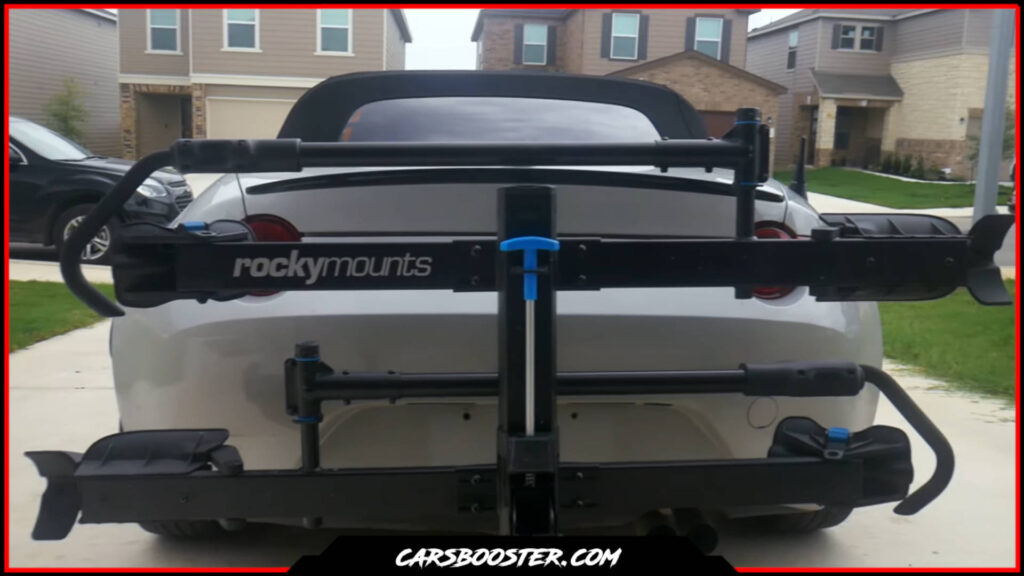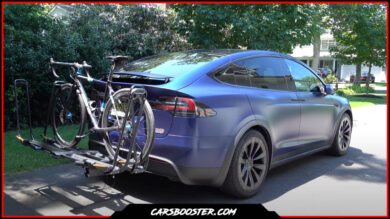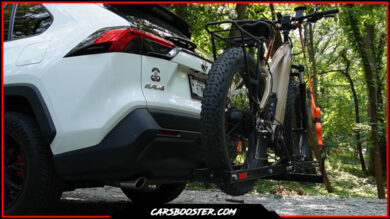
Biking is an enjoyable and healthy activity, but transporting your bike to various locations can be a challenging task. A bike rack is an essential tool that makes it easier to carry your bikes wherever you go. However, just like any other valuable item, bike racks are also prone to theft or damage. Therefore, it’s crucial to take measures to protect your bike rack from theft, damage, and other potential risks.
In this article, we’ll explore some tips and tricks for protecting your bike rack and your bikes. Whether you’re a seasoned cyclist or a beginner, these tips will help you keep your bike rack in top shape and ensure your bike arrives at your destination without any damage.
In short: At the end of this article, and by following the simple tips we provided in this article. Your bikes and bike rack should be ready to join you in your adventures for many years to come.
Choose The Right Bike Rack
Choosing the right bike rack is the first step toward ensuring the safety and security of your bike rack. There are different types of bike racks available, including hitch-mounted, trunk-mounted, and roof-mounted racks.
Each type has its advantages and disadvantages, and you need to select one that suits your specific needs. Additionally, you should also consider the number of bikes you need to transport and the size of your vehicle when choosing a bike rack.
For instance, if you frequently transport several bikes and have a large vehicle, a hitch-mounted rack may be the best option. On the other hand, if you have a small car and only need to transport one or two bikes, a trunk-mounted rack may be more suitable.
Therefore, it’s essential to choose the right bike rack that can accommodate your needs and ensure the safety of your bike rack.
Moreover, when choosing a bike rack, it’s essential to check the weight limit and ensure that it can accommodate the weight of your bikes without damaging the rack or your vehicle.
Assemble and Mount Your Bike Rack Correctly
Once you’ve chosen the right bike rack for your needs, it’s important to assemble and mount it correctly. Follow the manufacturer’s instructions carefully and double-check to make sure that all parts are securely in place before loading your bikes onto the rack.
Additionally, make sure that the bike rack is mounted securely to your vehicle. Loose or improperly mounted racks can cause damage to your vehicle or your bikes, and can also be a safety hazard on the road.
Finally, make sure that the bike rack is mounted in a position that does not obstruct your view or interfere with the functionality of your vehicle’s lights and signals.
Use A Protective Film or Tape
For bike rack scratch protection, consider using a protective film or tape. This is especially important if you’re transporting your bikes on a roof rack, where they’re more likely to come into contact with tree branches or other objects. Here are a few options:
1. Clear bra: This is a clear, adhesive film that’s applied to the surface of your bike rack. It’s durable, easy to clean, and provides excellent protection against scratches and other damage.
2. Electrical tape: This is a cheap and easy option for protecting your bike rack. Simply wrap the tape around any areas that are likely to come into contact with your bikes.
3. Duct tape: This is another inexpensive option for protecting your bike rack. However, it can leave behind a sticky residue and may need to be replaced more frequently than other types of tape.
Use Protective Pads
Bike rack Protection pads are an inexpensive and effective way to protect your bike during transportation and can be placed on the bike rack to prevent scratches and damage to your bike frame. They can also be used to protect your vehicle from scratches or damage caused by the bike rack.
When using Bike rack Protection pads, make sure they are securely fastened to the bike rack. Loose pads can cause damage to bikes or vehicles during transportation.
Bike rack Protection pads are particularly important when transporting carbon fiber bikes, which are more susceptible to damage than other types of bikes.
Mount Your Bikes Properly
Mounting your bikes correctly is crucial to prevent them from falling off or getting damaged during transit. Before mounting your bikes, ensure that they are clean and dry to prevent scratches and rust. Additionally, you should also adjust the bike’s seat, handlebars, and pedals to avoid any interference during transit.
When mounting your bikes, ensure that they are securely fastened to the rack and that all straps and hooks are in place. It’s also crucial to ensure that the bikes don’t touch each other or the vehicle to prevent scratches or damage.
Finally, before hitting the road, give your bikes and the rack a final check to ensure that everything is secure and in place.
Use The Proper Hardware with the Bike Rack
The hardware that comes with your bike rack is designed to ensure that your bikes are securely fastened to the rack and that the rack is securely attached to your vehicle. Therefore, it’s crucial to use the proper hardware that comes with your bike rack and avoid substituting it with other hardware.
Using the wrong hardware can compromise the safety and security of your bike rack, and it may not be able to withstand the weight of the bikes during transit. Additionally, using the wrong hardware can also damage your vehicle, the bike rack, or your bikes.
Therefore, always use the proper hardware that comes with your bike rack and ensure that it’s properly installed and tightened to prevent any accidents or damage.
Use a Locking Mechanism and Be Aware of Thieves
Bike racks are valuable items, and they are also prone to theft. Therefore, it’s essential to use a locking mechanism to secure your bike rack when you stop for a break during transit.
Most bike racks come with a locking mechanism that secures the rack to your vehicle and prevents the bikes from being removed. Additionally, you can also use a cable lock to secure your bikes to the rack and prevent any attempts to steal them.
Moreover, when parking your vehicle, choose well-lit areas and avoid leaving your bike rack unattended for extended periods. Thieves are always looking for an opportunity to steal valuable items, and being aware of their presence can help you avoid potential theft.
Consider a Cover
A bike rack cover is an excellent way to protect your bike rack from the elements and prevent damage. A cover can protect your bike rack from rain, snow, dust, and other debris that can damage the rack or your bikes.
Additionally, a cover can also deter thieves and prevent them from identifying the contents of your bike rack. Therefore, consider investing that fits your bike rack and provides adequate protection.
Remove the Rack When Not in Use and Store it Properly
When your bike rack is not in use, it’s essential to remove it from your vehicle and store it properly. Leaving your bike rack attached to your vehicle can cause damage to both the rack and your vehicle, especially if you frequently park in tight spaces or low clearance areas.
Therefore, remove the bike rack when it’s not in use and store it in a dry and secure location. Additionally, when storing the bike rack, ensure that it’s not exposed to extreme temperatures, moisture, or sunlight, as these can damage the rack’s components.
Regularly Check the Rack for Wear and Tear
Regularly inspecting your bike rack for wear and tear is essential to prevent any accidents or damage during transit. Over time, the components of your bike rack may wear out or become damaged, compromising the safety and security of your bikes.
Therefore, regularly check your bike rack for any signs of wear as rust, loose bolts, or damaged straps. Additionally, you should also check the weight limit of your bike rack to ensure that it can still accommodate the weight of your bikes without causing damage or compromising its safety.
Be Mindful of Weight Limits
Exceeding the weight limit of your bike rack can cause damage to the rack or your vehicle and compromise your bikes. Therefore, it’s crucial to be mindful of the weight limit of your bike rack and ensure that you don’t exceed it.
When selecting a bike rack, consider the weight of your bikes and ensure that the rack can accommodate their weight without causing damage. Additionally, you should also distribute the weight of your bikes evenly on the rack to prevent any imbalance that may cause the rack to tip during transit.
Don’t Drive Too Fast
Driving at high speeds can cause the bike rack to sway or wobble, compromising the safety and security of your bikes. Therefore, it’s crucial to avoid driving too fast when transporting your bikes on a bike rack.
Additionally, you should also avoid sudden stops or sharp turns that can cause the bikes to shift or fall off the rack. Therefore, drive carefully and be mindful of your speed to ensure your bikes stay stable during transit.
Be Aware of Height Limits with a Roof Bike Rack
If you have a roof-mounted bike rack, it’s essential to be aware of the height limit of your vehicle to prevent any accidents or damage. Roof-mounted bike racks can add height to your vehicle, which can make it challenging for low-clearance areas.
Therefore, before hitting the road, check the height of your vehicle and ensure that it’s within the limit. Additionally, when driving, be mindful of low-clearance areas such as tunnels, parking garages, and bridges to prevent any accidents or damage.
Conclusion: How To Protect Your Bike Racks?
Protecting your bike rack is crucial to ensure the safety and security of your bikes during transit. By choosing the right bike rack, mounting your bikes properly, using the proper hardware, using a locking mechanism, and being aware of potential risks, you can protect your bike rack from theft, damage, and other potential risks. Additionally, by regularly inspecting your bike rack, being mindful of weight limits, and driving carefully, you can ensure that your bikes arrive safely at their destination.
With that being said, we hope that we answered the question of how to protect bike racks, if you like our content, support us by sharing as sharing motivates us to produce more similar content.



